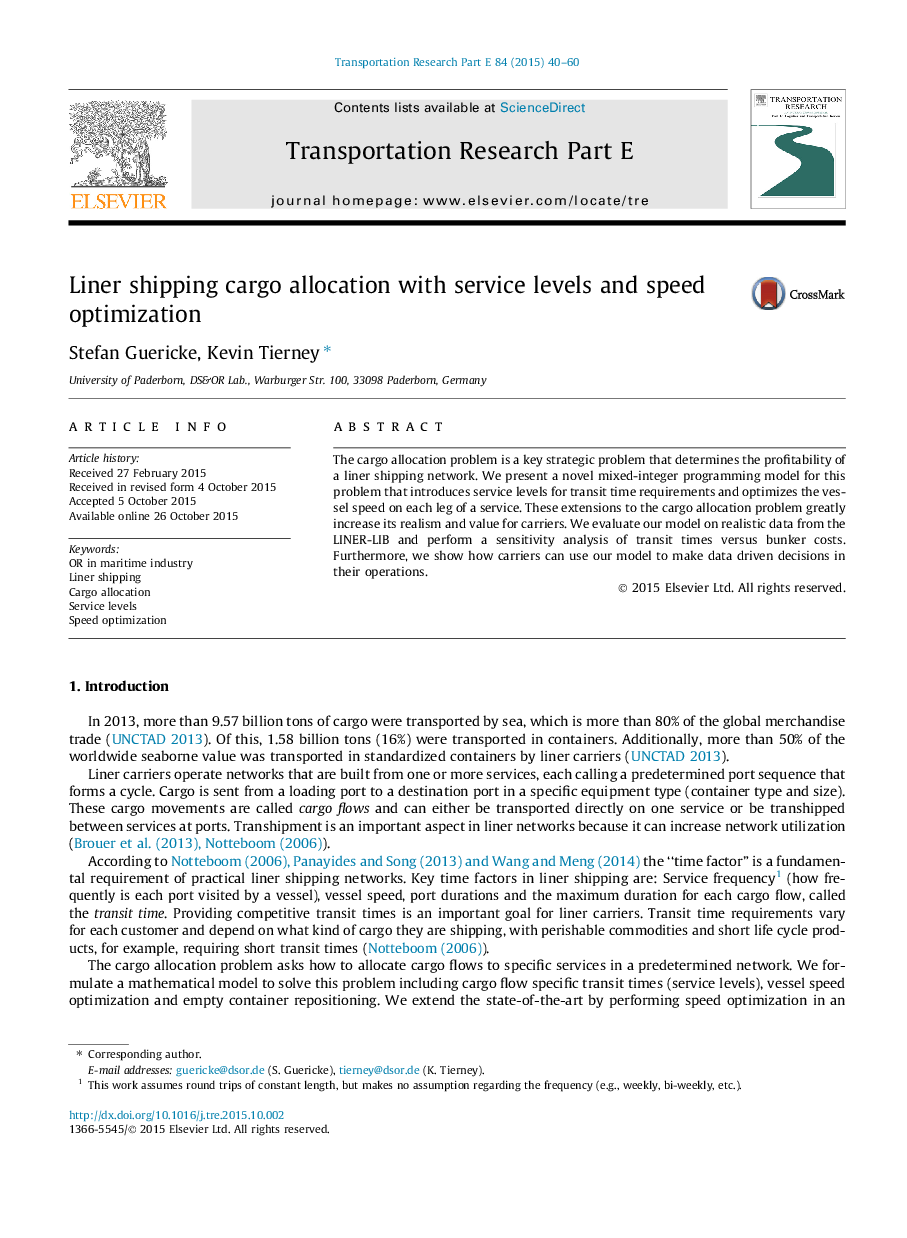| Article ID | Journal | Published Year | Pages | File Type |
|---|---|---|---|---|
| 1023018 | Transportation Research Part E: Logistics and Transportation Review | 2015 | 21 Pages |
•Our model incorporates speed optimization with transhipment durations and variable port stays for the cargo allocation problem.•We model cargo specific transit time restrictions and respect empty container repositioning.•Our results show the substantial impact of transit times on the revenue gained from liner networks.•The model can be used to assess heuristics in liner shipping network design problems.
The cargo allocation problem is a key strategic problem that determines the profitability of a liner shipping network. We present a novel mixed-integer programming model for this problem that introduces service levels for transit time requirements and optimizes the vessel speed on each leg of a service. These extensions to the cargo allocation problem greatly increase its realism and value for carriers. We evaluate our model on realistic data from the LINER-LIB and perform a sensitivity analysis of transit times versus bunker costs. Furthermore, we show how carriers can use our model to make data driven decisions in their operations.
